Artificial Neural Networks, Second Edition
Preface
Contents
Contributors
1 Introduction to the Analysis of the Intracellular Sorting Information in Protein Sequences: From Molecular Biology to Artificial Neural Networks
1 Introduction
1.1 How Do the Emergent Properties of Cells Arise from a Mix of Proteins, Lipids, Sugars, and Nucleic Acids? (See Note 1)
1.2 How Are Cargoes Selectively Loaded into the Right Vesicles and Delivered to the Right Compartments?
1.3 Can We Predict the Intracellular Destination of Transmembrane Proteins by Reading Their Amino Acid Sequences?
2 Method Foundations
2.1 Looking for Signals
2.2 Interpreting the Message
2.2.1 To Predict/Determine Signal-Adaptor Specificity: What Adaptor will Recognize a Given Signal?
2.2.2 To Predict/Determine Signal Relevance to Cargo Trafficking/Localization: What Is the Impact of Specific Adaptor-Signal Interactions for Cargo Trafficking/Localization?
2.3 Testing the Fate of Cargo
3 Protein Sequence Analysis Protocol
3.1 Finding the Amino Acid Sequence of the Cargo of Interest
3.2 Identification of the Cytosolic Region(s) Within the Cargo of Interest
3.3 Search for Motifs Fitting Sorting Signal Consensuses
3.4 Prioritize Isolated Motifs According to:
3.5 Predict Adaptor Recognition
3.6 Back-to-Context Analysis
4 Conclusion
4.1 Where to Go from Here?
4.2 Is Benchwork Still Needed?
5 Notes
References
2 Protein Structural Information Derived from NMR Chemical Shift with the Neural Network Program TALOS-N
1 Introduction
1.1 Relations Between Chemical Shifts and Protein Structure
1.2 Protein Backbone and Side-Chain Conformation from NMR Chemical Shifts
2 Materials
2.1 Software Requirements
2.2 Data Requirements
3 Methods
3.1 TALOS-N Prediction
3.2 Manual Inspection and Adjustment
3.3 Generation of Angular Restraints
4 Notes
References
3 Predicting Bacterial Community Assemblages Using an Artificial Neural Network Approach
1 Introduction
2 Materials
2.1 Collected Biological Observations
2.2 Required Computational Tools
3 Methods
3.1 Normalize Data from Biological Observations
3.2 Generate EIN from Normalized Data
3.3 Generate ANN from EIN
3.4 Implement MAP Model
3.5 Validate MAP model
4 Notes
References
4 A General ANN-Based Multitasking Model for the Discovery of Potent and Safer Antibacterial Agents
1 Introduction
2 General Procedure for the Setup of QSAR Models
2.1 Databases and Handling of the Retrieved Data
2.2 Molecular Descriptors and Their Applicability in QSAR Approaches
2.3 Modeling Techniques
3 An mtk-QSBER Model Combined with ANN for Virtual Screening of Antibacterial Agents
3.1 Curation of the ChEMBL Database
3.2 Moving Average Approach
3.3 Setup of the mtk-QSBER Model
3.4 Virtual Screening of Antibacterial Agents
4 Conclusions and Future Perspectives
References
5 Use of Artificial Neural Networks in the QSAR Prediction of Physicochemical Properties and Toxicities for REACH Legislation
1 Introduction
2 The Value of ANN-Derived QSARs
3 Do ANN-Derived QSARs Meet Validity Requirements for Regulatory Purposes?
4 Some Case Studies of ANN-Derived QSARs
4.1 Physicochemical Properties
4.1.1 Melting/Freezing Point
4.1.2 Boiling Point
4.1.3 Relative Density
4.1.4 Vapor Pressure
4.1.5 Surface Tension
4.1.6 Water Solubility
4.1.7 n-Octanol–Water Partition Coefficient
4.1.8 Flash Point
4.1.9 Flammability Limits
4.1.10 Explosive Properties
4.1.11 Self-Ignition Temperature (Autoignition Temperature)
4.1.12 Adsorption/Desorption
4.1.13 Dissociation Constant
4.1.14 Viscosity
4.1.15 Air–Water Partition Coefficient (Henry’s Law Constant)
4.2 Toxicological Properties
4.2.1 Skin Irritation or Corrosion
4.2.2 Eye Irritation
4.2.3 Skin Sensitization
4.2.4 Mutagenicity
4.2.5 Acute Toxicity (Mammalian)
4.2.6 Aquatic Toxicity
4.2.7 Degradation (Ready Biodegradability)
4.2.8 Acute Dermal Toxicity (Mammalian)
4.2.9 Short-Term Repeat-Dose Toxicity
4.2.10 Reproductive Toxicity
4.2.11 Toxicokinetics
4.2.12 Short-Term Fish Toxicity
4.2.13 Activated Sludge Respiration Inhibition
4.2.14 Abiotic Degradation (Hydrolysis)
4.2.15 Adsorption/Desorption
4.2.16 Sub-chronic Rodent Toxicity
4.2.17 Prenatal Developmental Toxicity
4.2.18 Two-Generation Reproductive Toxicity
4.2.19 Long-Term Aquatic Toxicity
4.2.20 Bioaccumulation in Aquatic Species
4.2.21 Effects on Terrestrial Organisms (Invertebrates, Microorganisms, Plants)
4.2.22 Carcinogenicity
4.2.23 Long-Term Effects on Terrestrial Organisms (Invertebrates, Microorganisms, Plants, Birds)
4.3 Software for Property and Toxicity Prediction
5 Conclusions
References
6 Artificial Neural Network for Charge Prediction in Metabolite Identification by Mass Spectrometry
1 Introduction
2 Methods
2.1 Construction of Training and Testing Sets
2.2 ANN Structure
2.3 Training Results
2.4 Future Research
3 Notes
References
7 Prediction of Bioactive Peptides Using Artificial Neural Networks
1 Introduction
1.1 Peptides and Their Use in Medicinal Chemistry
1.2 Use of Prediction Models in the Search for New Drugs
2 Materials
3 Methods
3.1 Build Datasets
3.1.1 Build the Positive Dataset
3.1.2 Build the Negative Dataset
3.1.3 Merge Datasets and Add the Class Vector
3.1.4 Script Explanation
3.2 Select Descriptors
3.2.1 Descriptor Calculation
3.2.2 Script Explanation
3.3 Develop the Artificial Neural Network Model
3.3.1 Selection of the Training and Test Datasets
3.3.2 Training and Validation
3.3.3 Testing
3.4 Network Visualization
4 Notes
References
8 AutoWeka: Toward an Automated Data Mining Software for QSAR and QSPR Studies
1 Introduction
2 Materials
2.1 Data Source
2.2 Drawing and Refining Chemical Structures
2.3 Calculating Molecular Descriptors
2.4 Data Compilation
2.5 Multivariate Analysis
2.6 Plotting Graphs
3 Methods
3.1 Data Source
3.2 Drawing and Refining Chemical Structures
3.3 Calculating Molecular Descriptors
3.4 Data Compilation
3.5 Machine Learning Algorithms
3.5.1 Artificial Neural Network
3.5.2 Support Vector Machine
3.6 Multivariate Analysis
4 Notes
References
9 Ligand Biological Activity Predictions Using Fingerprint- Based Artificial Neural Networks (FANN-QSAR)
1 Introduction
2 Methods
2.1 Data Sets
2.2 Implementation of Fingerprint-Based Artificial Neural Network QSAR (FANN-QSAR)
2.3 Comparison of the FANN-QSAR Model with Other Methods
2.4 Cannabinoid Receptor Binding Activity Prediction for Known Cannabinoid Ligands
2.5 Cannabinoid Receptor Binding Activity Prediction on Newly Reported Cannabinoid Ligands
2.6 Virtual Screening of the NCI Compound Database for Lead Cannabinoid Ligands
3 Notes
References
10 GENN: A GEneral Neural Network for Learning Tabulated Data with Examples from Protein Structure Prediction
1 Introduction
2 Types of Training and Prediction in GENN
2.1 Instance-Based Prediction
2.2 Window-Based Prediction
3 Database and Initialization File
4 Training and Prediction
4.1 Training a Model
4.2 Predictions from Trained Models
5 Special Options
5.1 Filter Network
5.2 Guided Learning
5.3 Global Inputs and Outputs
5.4 Degeneracy Training
5.5 Types of Output
6 Automated Learning
7 Examples
8 Summary
References
11 Modulation of Grasping Force in Prosthetic Hands Using Neural Network-Based Predictive Control
1 Introduction
2 Neural Network-Based Modeling
3 Optimization
4 Testing the Neural Network-Based NMPC on a Single Prosthetic Finger
5 Implementation on a Whole Hand Prototype
6 Notes
References
12 Application of Artificial Neural Networks in Computer-Aided Diagnosis
1 Introduction
2 Materials
2.1 ANN Architecture
2.2 Data Collection
2.3 Performance Evaluation
3 Methods
3.1 Medical Image Processing
3.2 Feature Extraction and Feature Selection
3.3 ANN Training
3.4 ROC Analysis and Observer Study
4 Notes
References
13 Developing a Multimodal Biometric Authentication System Using Soft Computing Methods
1 Introduction
2 Materials
2.1 Biometric Sensors
2.1.1 Voiceprint Sensors
2.1.2 Fingerprint Sensors
2.2 Sensor Data Acquisition Chain
2.2.1 Microphone Sensor Data Acquisition
2.2.2 Fingerprint Sensor Data Acquisition
2.3 Feature Extraction Algorithms
2.3.1 Voiceprint Hard Features
2.3.2 Voiceprint Soft Features
2.3.3 Fingerprint Hard Features
2.3.4 Fingerprint Soft Features
2.4 Hard Computing Pattern Matching
2.4.1 Voiceprint Hard Features
2.4.2 Fingerprint Hard Features
2.5 Soft Computing Pattern Matching
2.5.1 Artificial Neural Network (ANN)
2.6 Soft Computing Fusion and Decision
2.6.1 Fuzzy Logic Engine
2.7 System Modeling and Simulation Environments
2.7.1 ANN
2.7.2 FLE
2.8 Digital Signal Processor
3 Methods
3.1 Feature Extraction Layer
3.1.1 Voiceprint and Fingerprint Capture
3.1.2 Feature Extraction
3.2 Matching Layer
3.2.1 Enrollment Mode
3.2.2 Identifying Mode
3.2.3 Soft Biometric Training and Scoring
3.3 Decision Layer
3.4 Performance Evaluation
4 Notes
References
14 Using Neural Networks to Understand the Information That Guides Behavior: A Case Study in Visual Navigation
1 Introduction
2 Our Approach
3 Approach 1: ANN as a Classifier
4 Approach 2: Training an ANN Without Negative Examples
5 Approach 3: Learning and Discarding Views
6 Discussion and Future Directions
References
15 Jump Neural Network for Real-Time Prediction of Glucose Concentration
1 Introduction
2 The Diabetes Disease and Its Therapy
3 Glucose Prediction: A Brief State of the Art
4 A Jump Neural Network Methodology for Glucose Prediction
4.1 Inputs Selection and Preprocessing
4.2 Mathematical Representation of the Jump NN Model
4.3 Structure Optimization
4.4 NN Training Procedure
5 Database and Assessment Criteria
5.1 Database
5.2 Assessment Metrics
6 Results
7 Conclusions
References
16 Preparation of Ta-O-Based Tunnel Junctions to Obtain Artificial Synapses Based on Memristive Switching
1 Introduction
2 Materials
3 Methods
3.1 Substrate Preparation
3.2 Thin Film Deposition
3.3 Optical Lithography
3.4 Ion Beam Etching
3.5 Insulator
3.6 Contact Pads
4 Notes
References
17 Architecture and Biological Applications of Artificial Neural Networks: A Tuberculosis Perspective
1 Introduction
1.1 Human Brain
1.2 Architecture of Artificial Neural Networks
1.2.1 Feed-Forward Network
1.2.2 Feedback Network or Recurrent Network
1.3 Learning Algorithm of Neural Networks
1.3.1 Error-Correction Rule
1.4 Boltzmann Learning Rule
1.4.1 Hebbian Rule
1.4.2 Competitive Learning Rule
2 Biological Applications of ANNs
3 Methodology
4 Results
5 Discussion and Conclusions
References
18 Neural Networks and Fuzzy Clustering Methods for Assessing the Efficacy of Microarray Based Intrinsic Gene Signatures in Breast Cancer Classification and the Character and Relations of Identified Subtypes
1 Introduction
2 Materials
2.1 Dataset
3 Neural Networks and Fuzzy Clustering Methods
3.1 Self-Organizing Feature Map (SOM)
3.2 Emergent Self-Organizing Maps (ESOM)
3.3 Fuzzy Clustering by Local Approximation of MEmbership (FLAME)
3.4 Fuzzy C-Means (FCM)
4 Results and Discussion
4.1 Gene Clustering Based on the 71 and 93 Genes by SOM, ESOM, FCM, and FLAME
4.2 Classification of Subtypes: Clustering Patients Using SOM and FCM
4.2.1 SOM Clustering of Patients
4.2.2 FCM Clustering of Patients
5 Summary and Conclusions
References
19 QSAR/QSPR as an Application of Artificial Neural Networks
1 Introduction
2 Methodology
2.1 Software
3 QSAR/QSPR
3.1 QSAR-ANN Application
3.2 QSPR-ANN Application
4 Conclusions and Perspectives
References
Index
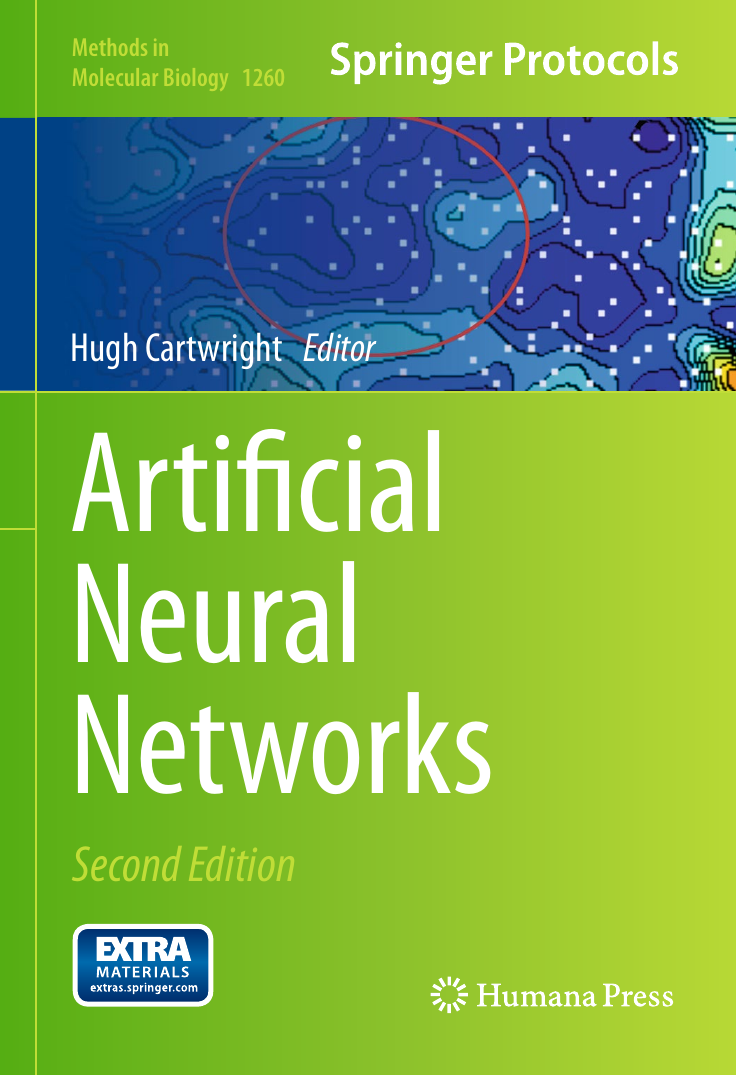
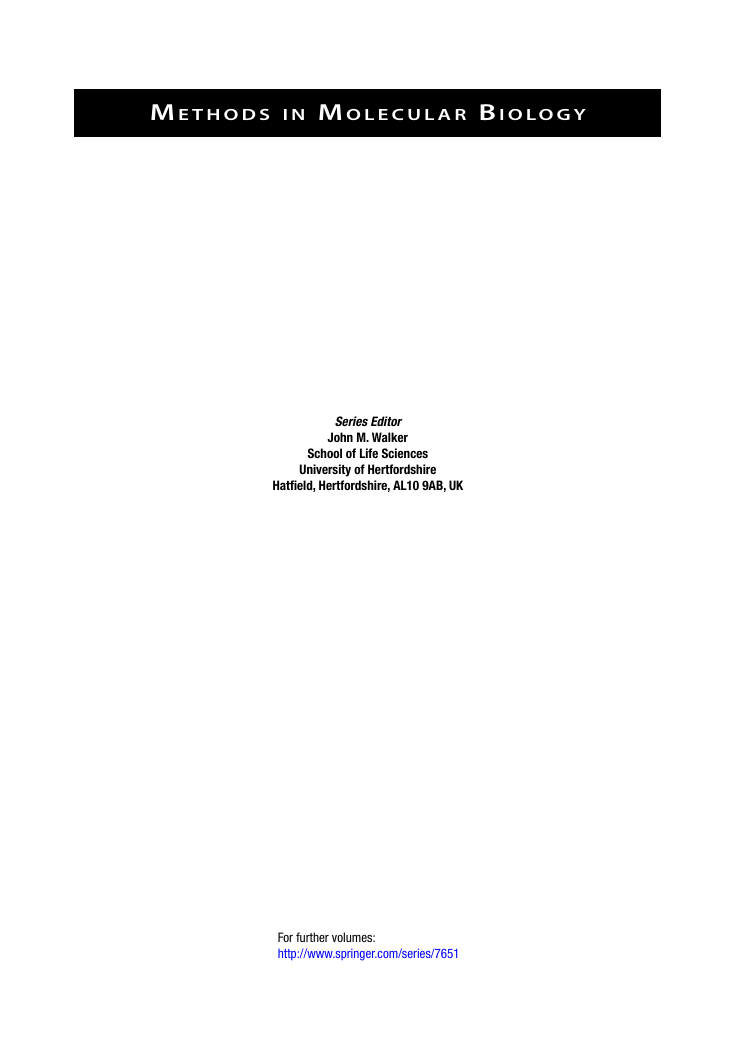

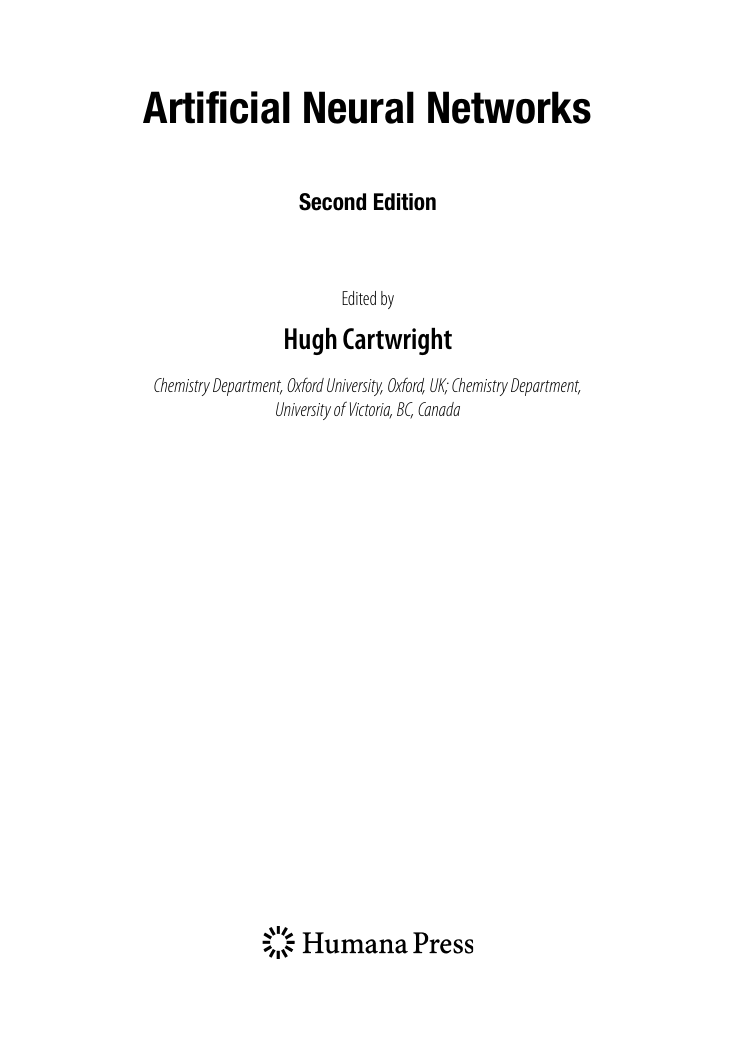
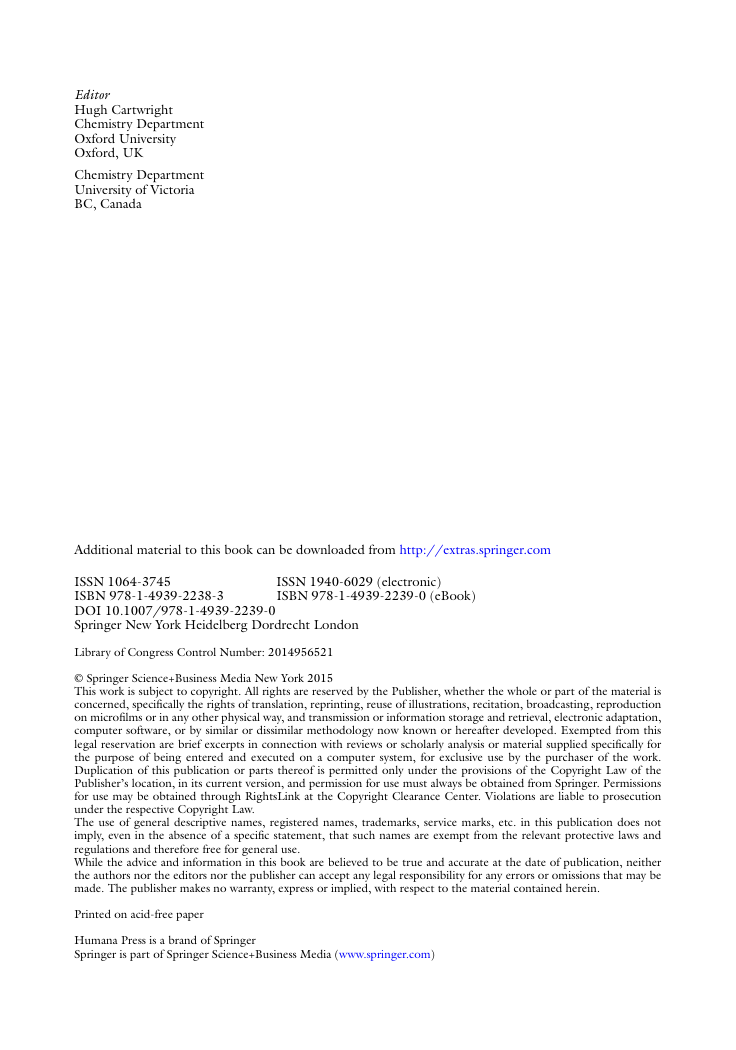
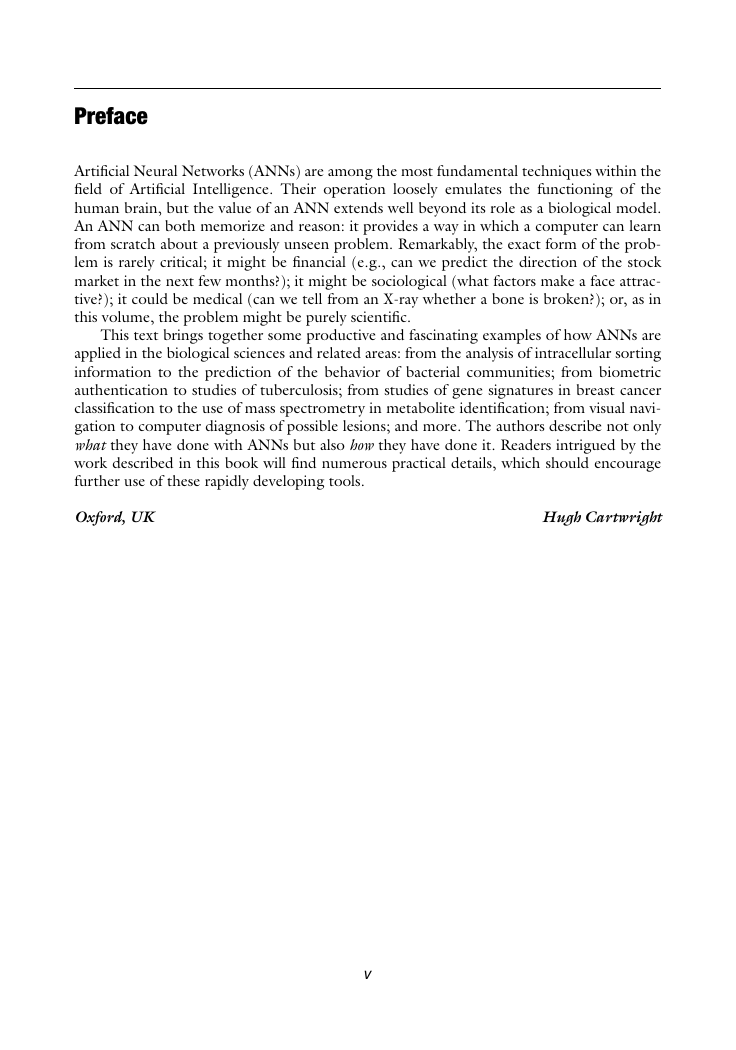

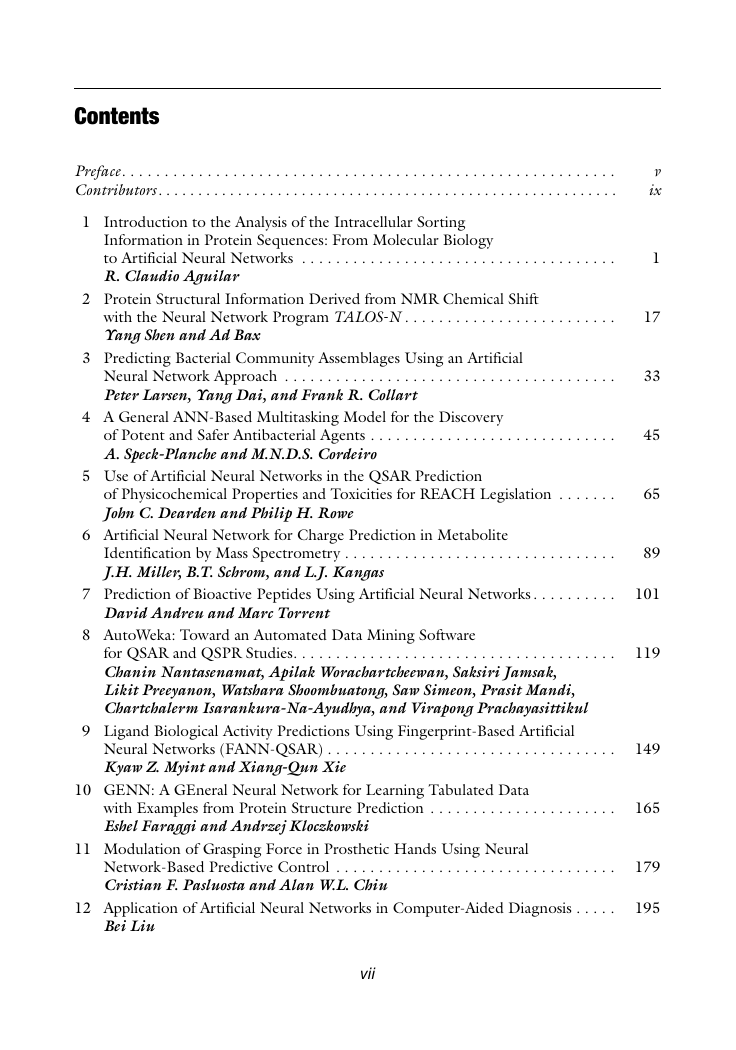








 2023年江西萍乡中考道德与法治真题及答案.doc
2023年江西萍乡中考道德与法治真题及答案.doc 2012年重庆南川中考生物真题及答案.doc
2012年重庆南川中考生物真题及答案.doc 2013年江西师范大学地理学综合及文艺理论基础考研真题.doc
2013年江西师范大学地理学综合及文艺理论基础考研真题.doc 2020年四川甘孜小升初语文真题及答案I卷.doc
2020年四川甘孜小升初语文真题及答案I卷.doc 2020年注册岩土工程师专业基础考试真题及答案.doc
2020年注册岩土工程师专业基础考试真题及答案.doc 2023-2024学年福建省厦门市九年级上学期数学月考试题及答案.doc
2023-2024学年福建省厦门市九年级上学期数学月考试题及答案.doc 2021-2022学年辽宁省沈阳市大东区九年级上学期语文期末试题及答案.doc
2021-2022学年辽宁省沈阳市大东区九年级上学期语文期末试题及答案.doc 2022-2023学年北京东城区初三第一学期物理期末试卷及答案.doc
2022-2023学年北京东城区初三第一学期物理期末试卷及答案.doc 2018上半年江西教师资格初中地理学科知识与教学能力真题及答案.doc
2018上半年江西教师资格初中地理学科知识与教学能力真题及答案.doc 2012年河北国家公务员申论考试真题及答案-省级.doc
2012年河北国家公务员申论考试真题及答案-省级.doc 2020-2021学年江苏省扬州市江都区邵樊片九年级上学期数学第一次质量检测试题及答案.doc
2020-2021学年江苏省扬州市江都区邵樊片九年级上学期数学第一次质量检测试题及答案.doc 2022下半年黑龙江教师资格证中学综合素质真题及答案.doc
2022下半年黑龙江教师资格证中学综合素质真题及答案.doc